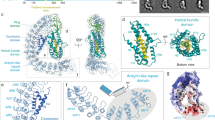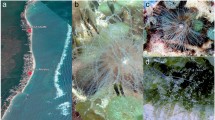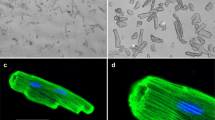Abstract
Crude black widow spider venom (BWSV) has profound physiological effects on several neuromuscular preparations, both vertebrate and invertebrate1. At frog and mouse neuromuscular junctions (NMJs), BWSV causes a massive increase in the frequency of miniature endplate potentials (m.e.p.ps)2,3 followed by a reduction in m.e.p.p. frequency and depletion of synaptic vesicles3–5. Qualitatively similar physiological and morphological effects are also observed at lobster6–8 and insect9,10 NMJs after treatment with BWSV. Apparently, therefore, this venom can cause the release of several transmitters—acetylcholine at vertebrate NMJs and γ-aminobutyric acid (GABA) and glutamate at invertebrate NMJs11. BWSV has also been shown to cause the release of acetylcholine, noradrenaline and GABA from slices of mouse cerebral cortex12,13. α-Latrotoxin, a protein of molecular weight (MW) 130,000, had previously been shown to be responsible for the venom effects at vertebrate NMJs and in mouse brain slices12–14. That finding prompted the question of whether α-latrotoxin was also responsible for transmitter release in the lobster preparation. The present report demonstrates that although the electrophysicological effects of BWSV on lobster and frog NMJs are similar, they are caused by different components of the venom. The effects on the lobster are attributable to fraction E, which contains a major 65,000-MW protein and several lower molecular weight species. It has previously been shown that fraction E causes firing of the crayfish stretch receptor14. Some of these results have been published elsewhere15.
This is a preview of subscription content, access via your institution
Access options
Subscribe to this journal
Receive 51 print issues and online access
$199.00 per year
only $3.90 per issue
Buy this article
- Purchase on Springer Link
- Instant access to full article PDF
Prices may be subject to local taxes which are calculated during checkout
Similar content being viewed by others
References
Hurlbut, W. P. & Ceccarelli, B. in Advances in Cytopharmacology Vol. 3 (eds Ceccarelli, B. & Clementi, F.) 87–115 (Raven, New York, 1979).
Longenecker, H. E. Jr, Hurlbut, W. P., Mauro, A. & Clark, A. W. Nature 225, 701–703 (1970).
Gorio, A., Hurlbut, W. P. & Ceccarelli, B. J. Cell Biol. 78, 716–733 (1978).
Clark, A. W., Mauro, A., Longenecker, H. E. Jr & Hurlbut, W. P. Nature 225, 703–704 (1970).
Clark, A. W., Hurlbut, W. P. & Mauro, A. J. Cell Biol. 52, 1–14 (1972).
Kawai, N., Mauro, A. & Grundfest, H. J. gen. Physiol. 60, 650–664 (1972).
Holtzman, E. et al. J. Histochem. Cytochem. 21, 349–385 (1973).
Fritz, L. C., Atwood, H. L. & Jahromi, S. S. Abstr. Soc. Neurosci. 5, 480 (1979).
Cull-Candy, S. G., Neal, H. & Usherwood, P. N. R. Nature 241, 353–354 (1973).
Ornberg, R. L., Smyth, T. & Benton, A. W. Toxicon 14, 329–333 (1976).
Gerschenfeld, H. M. Physiol. Rev. 53, 1–119 (1973).
Tzeng, M.-C. & Siekevitz, P. Brain Res. 139, 190–196 (1978).
Tzeng, M.-C., Cohen, R. S. & Siekevitz, P. Proc. natn. Acad. Sci. U.S.A. 75, 4016–4020 (1978).
Frontali, N. et al. J. Cell Biol. 68, 462–479 (1976).
Fritz, L. C., Tzeng, M.-C. & Mauro, A. Abstr. Soc. Neurosci. 4, 369 (1978).
Fritz, L. C., Wang, C. C. & Gorio, A. Proc. natn. Acad. Sci. U.S.A. 76, 2062–2066 (1979).
Hurlbut, W. P., Longenecker, H. E. Jr & Mauro, A. J. Physiol. Lond. 219, 17–38 (1971).
Tzeng, M.-C. & Siekevitz, P. J. Neurochem. 33, 263–274 (1979).
Rubin, L. L. thesis, Rockefeller Univ. (1976).
Finkelstein, A., Rubin, L. L. & Tzeng, M.-C. Science 193, 1009–1011 (1976).
Misler, S. & Hurlbut, W. P. Proc. natn. Acad. Sci. U.S.A. 76, 991–995 (1979).
Van der Kloot, W. & Kita, H. J. comp. Physiol. 91, 111–125 (1974).
Author information
Authors and Affiliations
Rights and permissions
About this article
Cite this article
Fritz, L., Tzeng, MC. & Mauro, A. Different components of black widow spider venom mediate transmitter release at vertebrate and lobster neuromuscular junctions. Nature 283, 486–487 (1980). https://doi.org/10.1038/283486a0
Received:
Accepted:
Issue Date:
DOI: https://doi.org/10.1038/283486a0
This article is cited by
-
House spider genome uncovers evolutionary shifts in the diversity and expression of black widow venom proteins associated with extreme toxicity
BMC Genomics (2017)
-
Effects of ?-latrotoxin on synaptic transmission between identified neurons in the snail central nervous system
Neurophysiology (1993)
-
Degeneration and regeneration in the superior cervical sympathetic ganglion afterLatrodectus venom
Journal of Neurocytology (1989)
-
Lobster neuromuscular junctions treated with black widow spider venom: Correlation between ultrastructure and physiology
Journal of Neurocytology (1980)
Comments
By submitting a comment you agree to abide by our Terms and Community Guidelines. If you find something abusive or that does not comply with our terms or guidelines please flag it as inappropriate.



